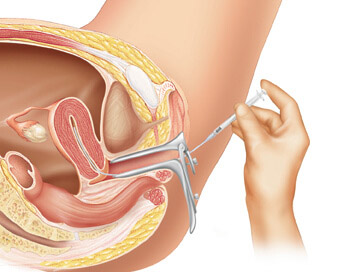IUI using husband semen is recommended in cases of:
- Unexplained infertility
- mild endometriosis
- infertility related to sexual problems
- mild sperm abnormalities
The development of the ovarian follicles is monitored with ultrasound and the insemination is timed to take place 36-40 hours after administration of HCG injection, which triggers ovulation.When ovulation has occurred, the husband is asked to produce a semen sample. This sample is prepared in the laboratory, and is then placed in the cavity of the womb by means of a fine catheter passed through the neck of the womb (cervix).
This treatment ensures accurate timing of sperm in the uterine cavity, and bypasses any hostile effects of cervical mucus on the sperm. The sperm preparation itself may also enhance the efficacy of the sperm.
IUI can only be performed in cases where the woman has at least one healthy Fallopian tube, and in which the sperm specimen prepares satisfactorily in the laboratory.
We usually require the sperm to have at least 5 million moving sperm per ml to give IUI treatment a reasonable chance of working.

